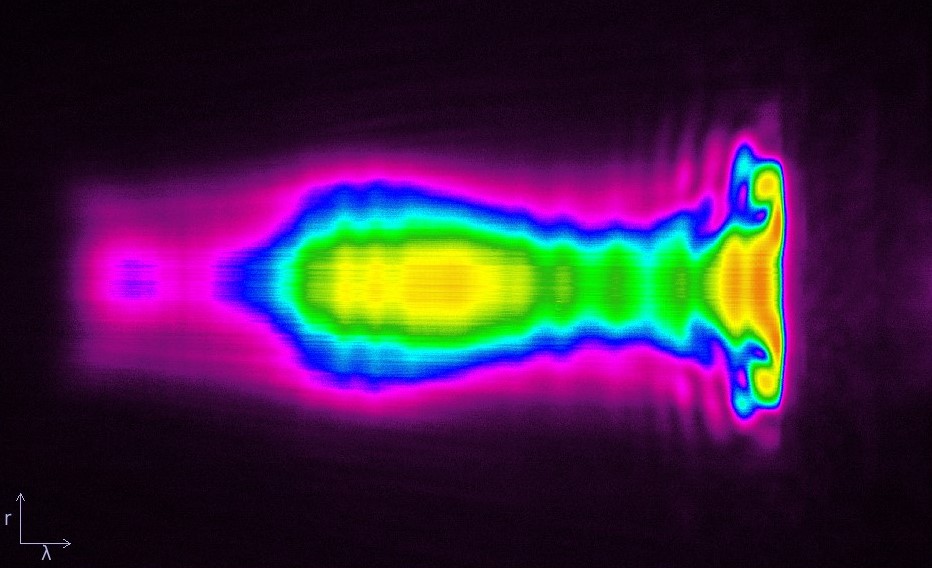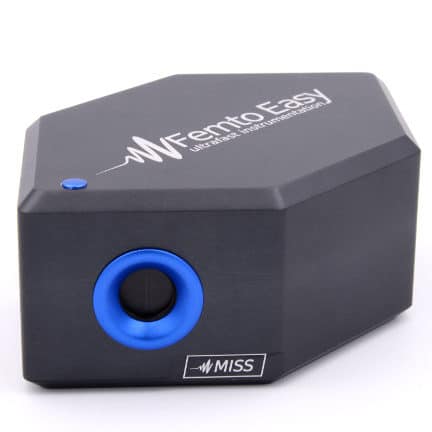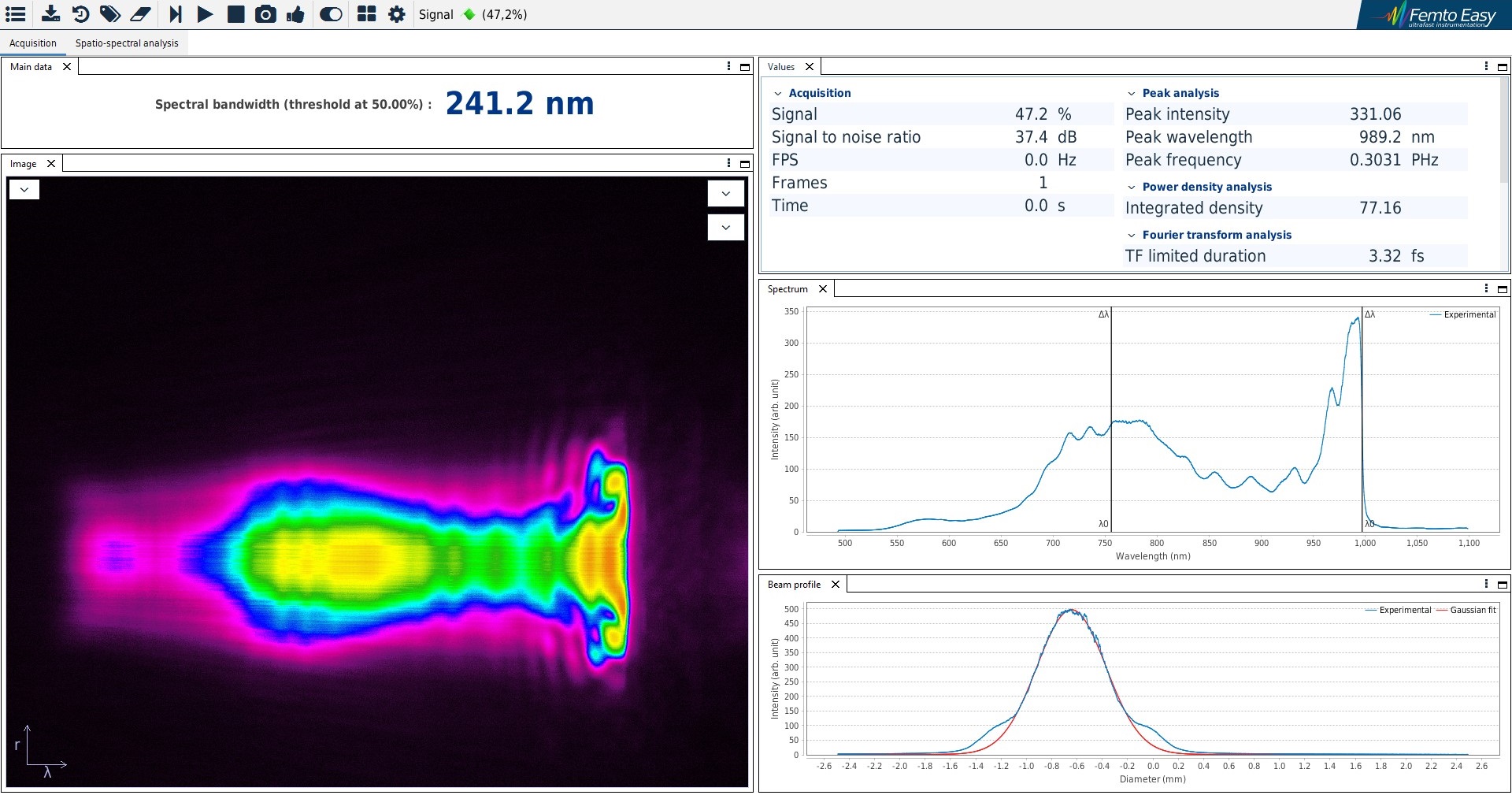MISS 2D Imaging Spectrometer: Acquire Spatially-Resolved Spectra of Laser Beams
The MISS laser beam 2D imaging spectrometer is an innovative spectrometer that gives you access to the spatially resolved spectrum of your laser sources. MISS stands for Mini Imaging Spatial Spectrometer. As a spectrometer, it allows you to know the spectrum for your laser, i.e. the intensity of each wavelength (or frequency) present in your laser. While other spectrometers give only a 1D average spectrum, MISS allows you to know the spectrum at different locations inside the laser beam – along the laser beam cross-section. Our MISS spectrometer gives you a 2D image: one dimension being the position in one diameter of the beam, the other is the spectrum at this position.
When used to characterize ultrafast laser beams, the MISS provides the vertical and horizontal spatial chirp. Its compactness allows it to be integrated at different stages of amplified laser systems to measure the chirp at any position of your beam path. You can use it in free space mode to take benefit of the spatial resolution, or with a fiber input, like a regular spectrometer.
Besides being a powerful standalone instrument, the MISS spectrometer is also a critical component of the Femto Easy FROG systems. When coupled to a FROG system, this imaging spectrometer provides a spectrally resolved autocorrelation trace. The result is analyzed using an iterative algorithm to provide full time and spectral information of an ultrafast laser pulse. Since the MISS spectrometers can measure wavelengths from 240 nm to 1050 nm, they can be used to characterize laser pulses with fundamental wavelengths from 480 nm to 2100 nm when coupled to a FROG system.
Key Features:
- From UV to IR – Different models from 240 nm to 1700 nm. Easily customizable.
- High resolution – High spatial and spectral resolution
- Compact footprint – Can be placed anywhere in the beam path
- Spatial chirp measurement – Horizontal and vertical chirp measurement



